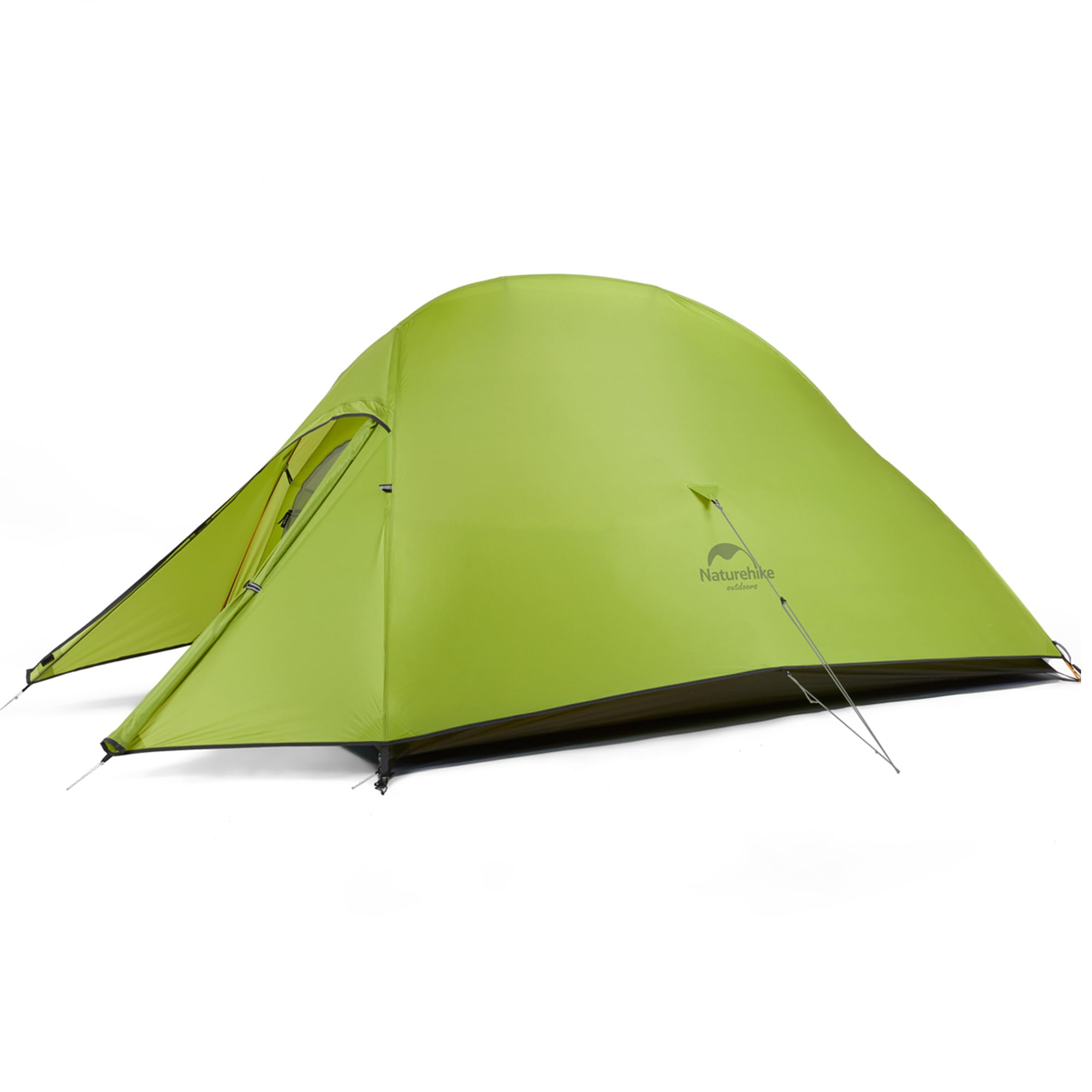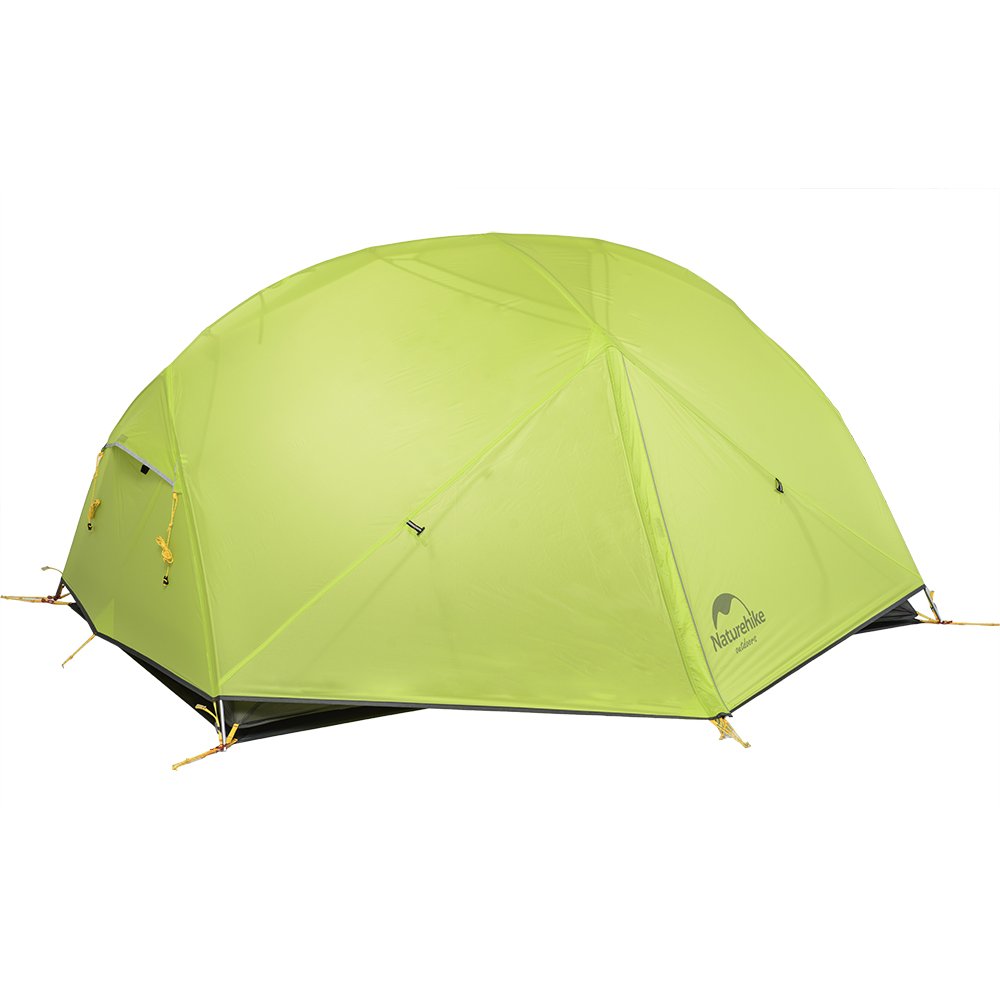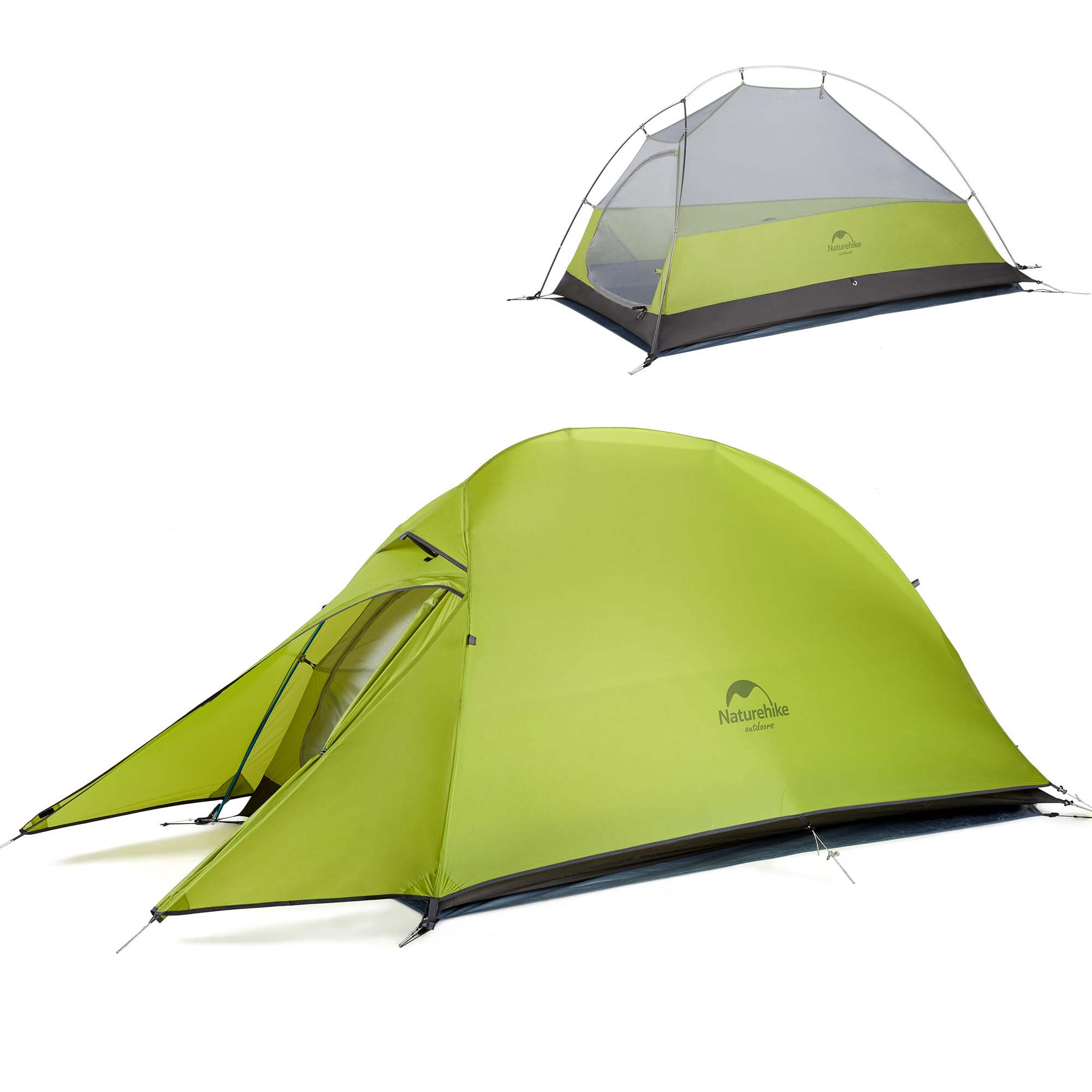Ultralight backpacking tents are a game changer for hikers seeking to minimize their load while still enjoying the great outdoors.
These tents strike a balance between weight, durability, and ease of setup, making them ideal for long treks where every ounce counts.
With advancements in materials and design, we’ve seen a new wave of options that cater specifically to the needs of ultralight adventurers.
When we think about ultralight gear, the focus often shifts to maximizing space and comfort without compromising on protection from the elements.
Finding the right tent can make a significant difference in our hiking experience.
The best ultralight backpacking tents offer a blend of lightweight materials that still provide sufficient weather resistance and insulation, ensuring we remain dry and warm.
As we consider our options, it’s essential to pay attention to factors like weight, space, and weather resistance.
The tent’s weight will directly impact how far we can comfortably hike, while the internal space should allow for a restful night.
Additionally, the material affects not only the tent’s weight but also its durability against wear and tear.
With all these variables in mind, it’s time to explore some of the top contenders in the ultralight backpacking tent category.
Best Ultralight Backpacking Tents
When we’re out on the trails, having the right gear can make all the difference.
We’ve rounded up some of the best ultralight backpacking tents to help us enjoy our hiking adventures without the extra weight.
Let’s take a look at our top picks! These tents offer a perfect balance of durability, weather resistance, and minimal weight, making them ideal for long treks.
Of course, a great tent is just one part of a well-planned trip—pairing it with the best ultralight backpacking stoves ensures we can cook warm meals without adding unnecessary bulk to our packs.
With the right setup, we can focus on enjoying the journey while staying comfortable and well-fed on the trail.
Naturehike Cloud-Up 2 Person Tent
For those seeking an easy-to-setup and lightweight option, the Naturehike Cloud-Up tent is worth considering.
- Extremely lightweight at just 3.97lbs.
- Quick to assemble—less than two minutes for setup.
- Offers a waterproof design suitable for various weather conditions.
- Space may feel tight for larger individuals.
- Some users report condensation issues.
- Limited interior features compared to heavier models.
This tent impresses with its lightweight design, making it ideal for backpacking.
We appreciate how easy it is to pitch, especially for those who may not have extensive camping experience.
The construction from durable materials ensures it can withstand tough conditions, keeping us dry inside.
The space provided is adequate for two people but might feel cramped, especially with gear.
We enjoy the vestibule, which is handy for keeping our belongings organized and dry.
Yet, it’s important to note that on colder nights, some users have mentioned experiencing a bit of condensation inside.
In summary, the Naturehike Cloud-Up strikes a balance between portability and functionality.
With a quick setup and solid weather resistance, it stands out for weekend hikers and backpackers alike.
Just be mindful of space and ventilation if you’re planning on using it for extended trips.
Naturehike Mongar 2 Person Tent
We find this tent to be a solid choice for those seeking a lightweight and compact option for backpacking trips.
- Weighs only 4.73 lbs, making it easy to carry.
- High-quality materials enhance durability and weather resistance.
- Simple setup process allows for quick assembly.
- Limited space may feel cramped for taller individuals.
- Not ideal for extreme winter conditions.
- Dual-layer design can be cumbersome when packing.
The Naturehike Mongar tent stands out with its impressive lightweight design, perfect for hiking enthusiasts who prioritize mobility.
We appreciate the thoughtful inclusion of a footprint, ensuring added protection against the elements, making it suitable for 3-season use.
Setting up the tent is straightforward, thanks to its Y-frame structure.
With installation instructions sewn directly into the carry sack, even first-time users can pitch it without hassle.
In terms of space, it offers around 30 square feet, providing ample room for two people.
Still, those taller than average might find it a snug fit around the length.
For added convenience, the dual vestibules offer versatile storage options for gear and easy access to the tent, adding to the overall appeal for backpacking adventures.
Essentially, if you’re looking for a reliable ultralight tent, the Naturehike Mongar is definitely worth considering.
LANSHAN Ultralight Tent
When it comes to lightweight camping, we think the LANSHAN Ultralight Tent is a solid choice for our outdoor adventures.
- Lightweight, making it easy to carry on long hikes.
- Offers excellent ventilation for a comfortable interior.
- Highly waterproof, ensuring protection in wet weather.
- Setting up can require some practice for perfection.
- Limited space can feel tight for two people.
- Lack of trekking poles means additional purchases may be needed.
This tent stands out with its impressive weight of only 2.2 pounds, allowing us to pack it down to a neat size.
The design incorporates no-see-um mesh, promoting airflow while keeping bugs at bay.
Ventilation becomes particularly important on warm nights or when condensation is a concern.
In addition to being lightweight, this tent excels in waterproofing.
With a rainfly rated at 5000mm, it withstands rain, keeping our gear dry during unexpected storms.
It even holds its own in windy conditions, giving us confidence during adverse weather.
Setting up the tent is straightforward but can be easier with a bit of practice.
While it’s designed for one or two people, we found the space snug, especially with gear inside.
Having just one door may present some challenges for easy access, so we recommend thinking about who we’re camping with before deciding if it’s the right fit.
Overall, the LANSHAN Ultralight Tent is a great companion for our backpacking trips, marrying good functionality with lightweight convenience.
MC TOMOUNT Camping Tent
This ultralight tent is a solid choice for hikers seeking convenience without compromising on quality.
- Lightweight design makes it easy to carry on long hikes.
- Quick setup allows even novices to pitch the tent in just 10-15 minutes.
- Double-layer construction enhances insulation and protects against the elements.
- Some users might find the poles a bit too thin for rigorous use.
- A footprint or tarp isn’t included, which can be a downside for ground protection.
- Limited space for gear if used by one person only.
The MC TOMOUNT camping tent boasts impressive features that make it a popular option among backpackers.
Its lightweight nature at around 4.65 pounds ensures that it won’t be a burden on our travels.
We appreciate that the tent can be set up quickly, even for those new to camping, which adds to the overall convenience.
The materials used in this tent also stand out.
With waterproof capabilities and a double-layer design, it enhances our protection against rain and cold temperatures.
The mesh inner net helps with ventilation, reducing condensation, which can be a common issue in backpacking tents.
While this tent serves its purpose well, we should consider the minor drawbacks.
The thinner aluminum poles may raise concerns for those seeking extra durability.
Moreover, the absence of a footprint makes it essential for us to find additional ground protection.
Despite these points, the MC TOMOUNT tent remains a reliable choice for our outdoor adventures.
Naturehike Cloud-Up 1 Person Tent
This lightweight tent is an excellent option for solo hikers seeking minimal weight and maximum convenience.
- Extremely portable at just 3.3 lbs.
- Quick and easy setup in under two minutes.
- High waterproof rating to keep us dry.
- Limited space can be a bit cramped for taller users.
- Airflow may be an issue in humid conditions.
- Best suited for solo use, not ideal for two.
The Naturehike Cloud-Up tent impresses us with its lightweight design, making it perfect for backpackers who want to cut down on weight.
With dimensions of 82.7″ L x 43.3″ W, this tent provides adequate room for a single occupant to sleep comfortably.
The tent packs down small, easily fitting into our packs, allowing us to carry additional gear.
Setting up the tent is as easy as it gets.
We can assemble it in under two minutes, even if we’re a little inexperienced.
This simplicity is essential when we’re on the trail and tired after a long day of hiking.
The durable aluminum poles additionally ensure the structure can withstand various weather conditions.
On the downside, a little more interior space could enhance comfort, especially for taller users.
While the hydration resistance is a significant advantage, there can be challenges in airflow, particularly in humid environments.
This tent shines as a solo option, and while it’s roomy enough for one, adventurers seeking more generous space should look elsewhere.
Buying Guide
When choosing an ultralight backpacking tent, there are several factors we should consider.
1.
Weight
We want a tent that is lightweight without sacrificing durability.
Look for options that weigh under 3 pounds for easy portability.
2.
Material
The material affects both weight and weather resistance.
Common choices include nylon and polyester.
3.
Space
Think about how many people will be using the tent.
A two-person tent provides enough space for gear and comfort.
4.
Set-Up
Quick and easy setup is crucial, especially after a long day of hiking.
Look for tents that come with intuitive pole systems.
5.
Weather Resistance
Check the tent’s waterproof rating measured in millimeters.
A rating of 1,500 mm or higher is typically sufficient for rain protection.
| Feature | Importance |
|---|---|
| Weight | Essential for hiking |
| Material | Affects durability and weight |
| Space | Ensures comfort and gear storage |
| Set-Up | Saves time and effort |
| Weather Resistance | Protects against elements |
6.
Price
We should set a budget and find the best value for our needs.
More expensive options often offer better materials and features.
With these criteria in mind, we can better navigate the options available to us.
Happy hiking!
Frequently Asked Questions
In this section, we’re addressing common questions that arise when choosing ultralight backpacking tents.
The right tent can make or break our outdoor experience, so let’s clarify some of these important details.
What is the optimal weight range for an ultralight backpacking tent?
For ultralight backpacking tents, we typically look for a weight range of 1 to 3 pounds.
Tents in this range provide a good balance between weight, space, and durability, making them ideal for multi-day hikes.
How do I choose the best 1-person ultralight tent for a solo hiking trip?
To select the best 1-person ultralight tent, we should consider weight, packability, and weather resistance.
Look for tents with a minimum weight under 2 pounds and features like a vestibule for gear storage and good ventilation for comfort.
What are the top recommended ultralight tents for two backpackers?
For two backpackers, tents like the Big Agnes Copper Spur HV UL2 and the REI Flash Air 2 are often recommended.
They offer ample space and durability while remaining lightweight, typically around 3 pounds or less.
Which materials are considered best for durability and weight in ultralight tents?
When choosing materials, we often find silicone-coated nylon and Dyneema to be the best for ultralight tents.
Both options provide a great balance of strength, waterproofing, and weight savings, helping us stay light on our feet.
Why might some hikers prefer ultralight tents over traditional ones?
Hikers might choose ultralight tents for several reasons, including weight savings and ease of transport.
An ultralight shelter can significantly enhance our hiking experience by making it easier to carry essential gear over long distances.
What are the most popular ultralight tent brands among experienced backpackers?
Experienced backpackers frequently turn to brands like Big Agnes, Sea to Summit, and MSR for ultralight tents.
These brands have a solid reputation for quality and innovation, which gives us confidence in their products.






